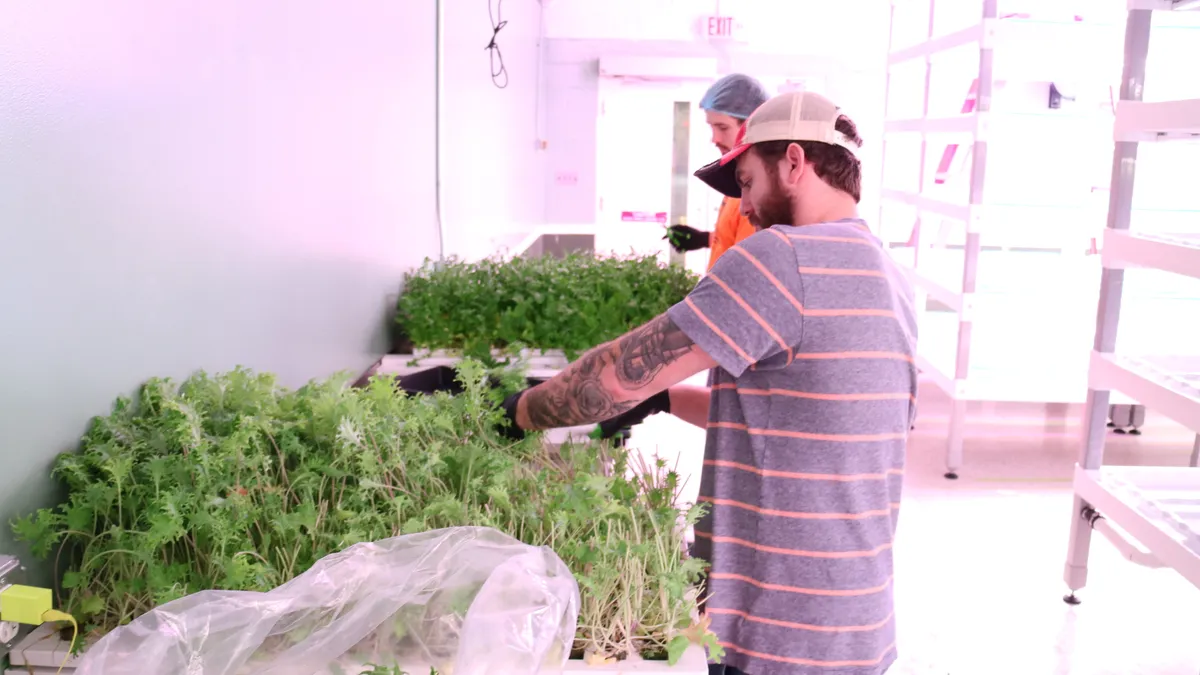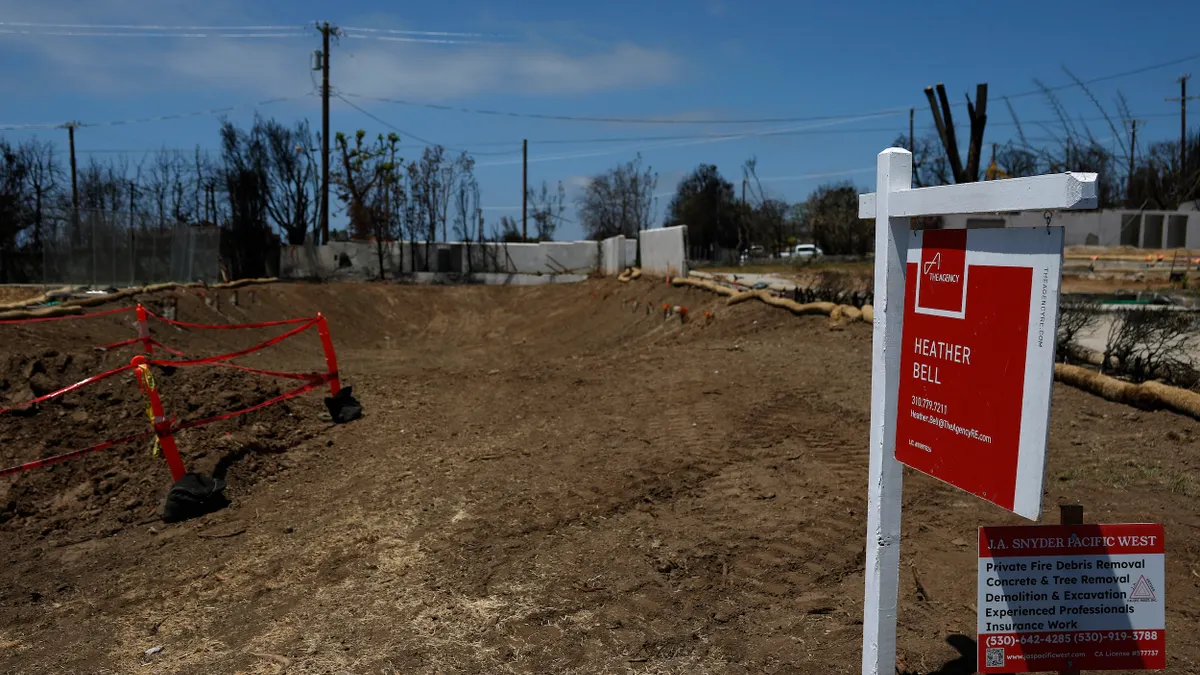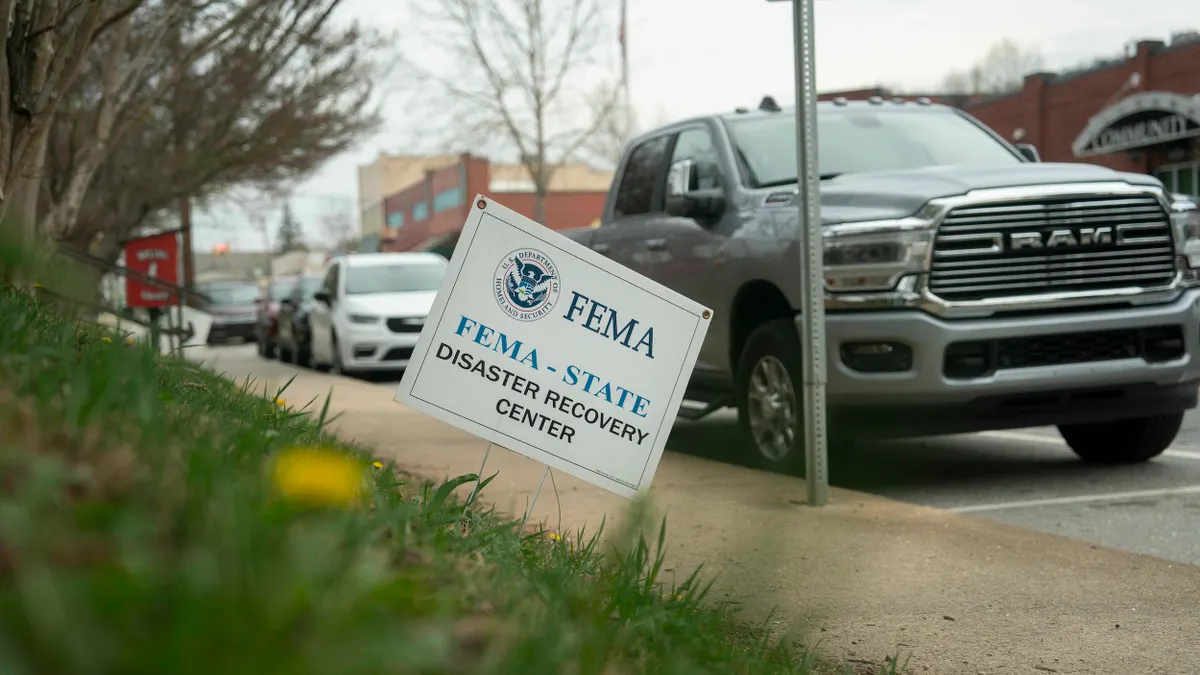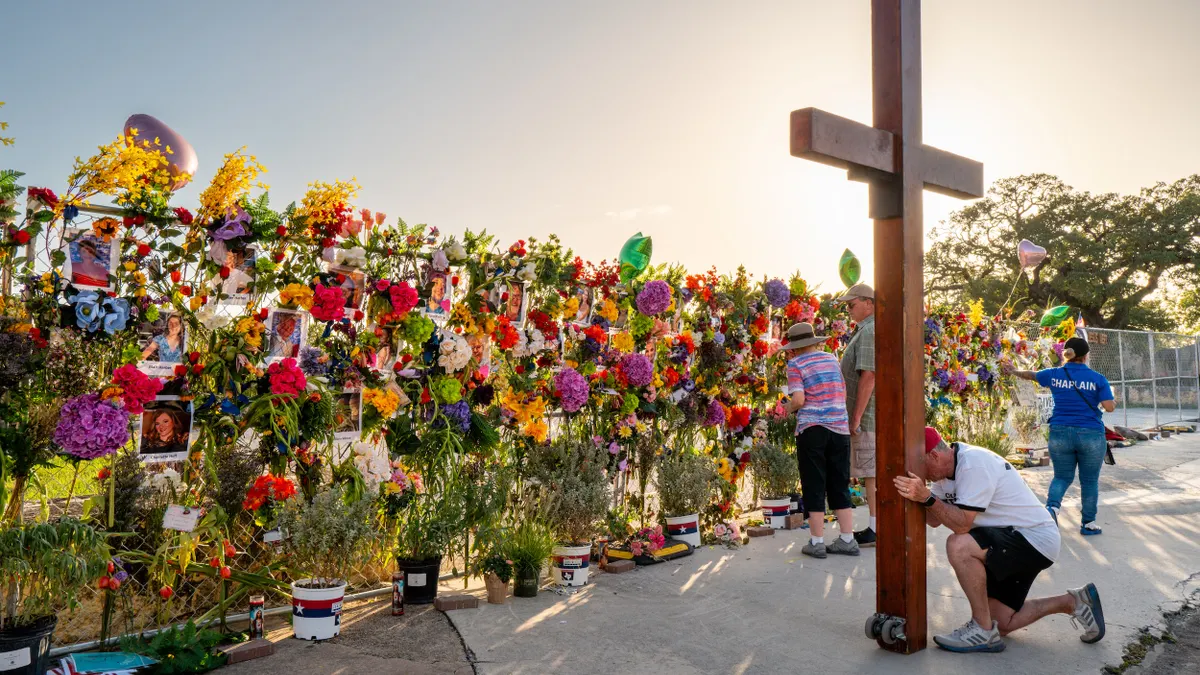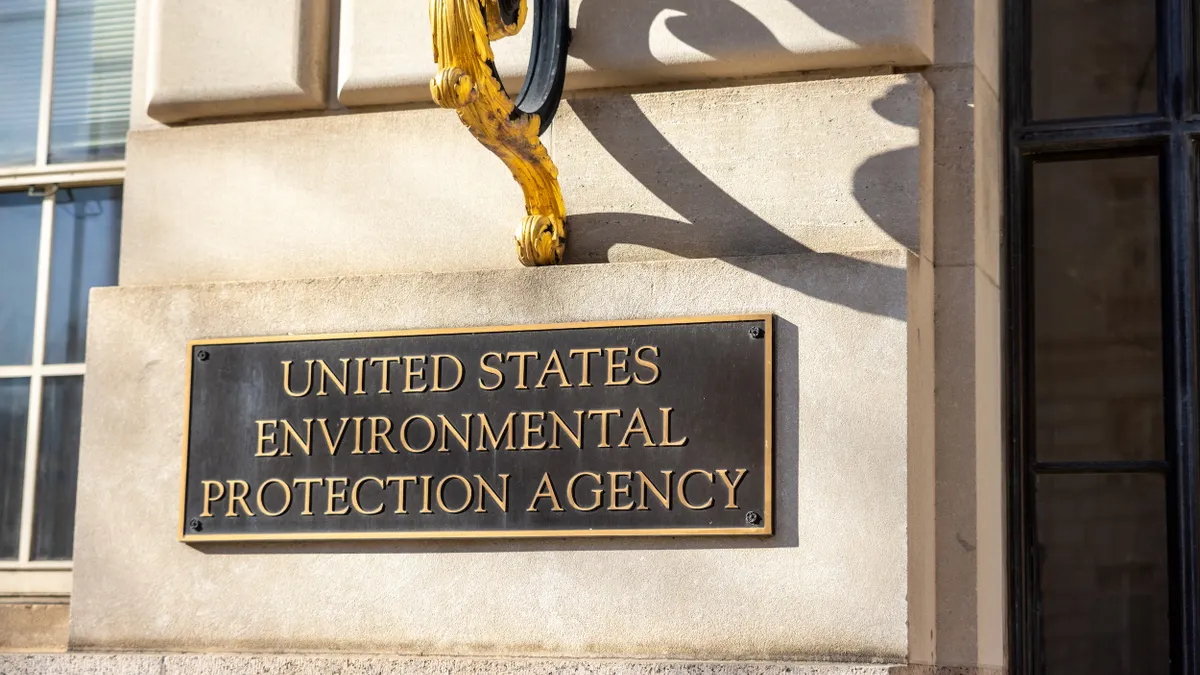The grow room at Second Chances Farm in Wilmington, Delaware, feels like the future.
Tucked away inside a low-rise industrial building on the city’s economically disadvantaged East Side, across from a charter school and in the shadow of a Pepsi bottling plant, the room is bright and clean, the air permeated with the scent of basil and rosemary. Among the brightly lit racks of hydroponically grown herbs, fruits and vegetables, workers seed trays of growing medium and monitor the progress of the crops.
For these employees, each one formerly imprisoned by the state or federal government, that future feeling isn’t abstract. By making its mission to employ only what company literature refers to as "returning citizens," Second Chances Farm has allowed these workers to envision lives not dictated by their past crimes, but instead characterized by steady jobs, living wages and training in an industry that its proponents say represents the next wave of sustainable urban farming.
Second Chances Farm is preparing to expand its operation to Philadelphia’s North Broad Street neighborhood, which faces similar challenges as Wilmington's East Side. But after the near death blow of the coronavirus pandemic, and facing several financial and legal challenges emerging from both its operations and the earlier business dealings of founder Ajit Matthew George, multiple factors are working against the company's success.
Meanwhile, while vertical farming’s supporters tout its many benefits — among them, saving arable land and preventing deforestation, cutting agricultural water use, locating food sources in urban centers and making up for a decline in the number of farmers — some question the viability of the model on which Second Chances Farm is based.
A second chance
George has been present in the business world of Wilmington since he was the director of marketing and membership services for WHYY, the Philadelphia market’s largest public TV and radio station, more than 40 years ago. But it was as the founder of the Mid-Atlantic Food + Wine Festival and the organizer for Wilmington’s series of TedX events that he says he was inspired to create Second Chances Farm, after he heard presentations on providing opportunities to ex-offenders and on vertical farming.
In Delaware, 70% of people who are formerly incarcerated are re-arrested, and 60% are recommitted, according to state figures. Meanwhile, the average cost to house a prison inmate in Delaware is $32,967, based on a 2015 report from the Vera Institute for Justice. "I viewed that as a waste of capital, and my goal is to create a crop of compassionate capitalists," George said.
He envisioned Second Chances Farm as "a capitalist solution to a social problem," George said, one designed to eventually make money for investors. But its primary mission is to give former inmates a path to dignified, sustaining work while providing produce grown locally in a setting that’s sensitive to the environment and the needs of the surrounding community, he said.
By locating it in an underserved neighborhood, where many of those former inmates are returning, the farm can take advantage of federal Opportunity Zone tax benefits put in place during the Trump administration. It can also reduce the transportation pressures that prevent many formerly incarcerated individuals from holding on to steady work. George serves as "entrepreneur in residence;" starting annual pay for employees is $31,200, plus medical and other benefits, he said.
He’s optimistic that the Second Chances Farm model will succeed in its second location an hour up I-95. While the Wilmington site employs between 10 to 15 people in gardens that use just a portion of its 47,500-square-foot building, plans are to hire between 50 and 70 formerly incarcerated individuals for the 250,000-square-foot Philadelphia site.
"There’s lots of indoor vertical farms coming up in the country because it’s not a new thing," George said. Preparing his employees with training in "green collar" jobs gives them opportunities most would never have had coming out of prison. “We can send people all over the country to do this, and you don’t need a degree.”
Challenges and changes
Before the inception of Second Chances Farm, financial woes accompanied at least one of George’s projects. Though lauded by the press and restaurateurs, the Mid-Atlantic Food + Wine Festival was underwhelming as a fundraising event, according to a story in the News Journal/Delawareonline.com. Only a small fraction of the money made by the festival went to organizations represented as beneficiaries in promotions for the event.
Second Chances Farm also has faced several challenges. On March 16, 2020, just as the farm was harvesting its first crop for distribution to restaurant customers throughout the region, the governor of Delaware declared a lockdown in the state, closing restaurants to help stem the spread of COVID-19.
Ajit huddled with his team, emerging with a plan to convert what was originally a restaurant supply operation to a farm-to-table, community-supported agriculture model, taking subscriptions for regular home delivery of produce throughout New Castle County, Delaware, and the bordering counties of Cecil County, Maryland, and Delaware and Chester counties in Pennsylvania. The pivot resulted in more than 460 subscribers, the stabilization of the farm through the pandemic and a steady supply of fresh produce and natural products going to the surrounding neighborhood, regarded as a food desert, George said.
More recently, other legal and financial missteps have loomed over the project. At least one former business partner, Patrick Lloyd, filed a breach of contract suit against George and Second Chances Farm, alleging that in addition to breaching their business agreement, George also divulged the organic garlic grower’s proprietary process and has prevented him from accessing his business website and equipment. George told the News Journal in a statement that Lloyd held debts that he did not disclose before their agreement was struck. Neither agreed to be interviewed by the News Journal.
Two former contractors have complained of lack of payment, and one local nonprofit has ended an agreement with Second Chances Farm over financial issues.
In his statement to the News Journal, George attributed to the skipped payments to the farm’s challenges during the pandemic, which he said were significant. George did not respond to requests from Smart Cities Dive to comment on the farm’s financial difficulties, the ongoing legal challenges or his past business dealings.
He is, however, upfront about the financial tightrope Second Chances Farm walks and the need to have the support of investors who see the larger picture of what he’s trying to do. Those investors, he said, should be comfortable with longer timelines for returns as the operation continues to grow. At the same time, he said it’s unfortunate that many investors looking for socially conscious opportunities still balk when they learn the primary beneficiaries of the farm’s mission are former inmates.
Will it work?
Financial difficulties specific to Second Chances Farm notwithstanding, some outside observers question whether the indoor vertical farming model on which it is based is commercially viable or as environmentally friendly as its proponents claim.
One major obstacle, which George acknowledges, is the significant startup costs associated with the process. Research by the Economy League of Philadelphia suggests that with an estimated $4 million in startup costs for a 30,000-square-foot operation, and crop production limited mainly to lettuces, microgreens, herbs, strawberries and vine vegetables like tomatoes, odds are against the chances of success for vertical farming operations, with only 27% eventually becoming profitable.
However, various studies have also noted that because vertical indoor vegetable and fruit farming is a relatively new industry, these high startup costs should be expected and might eventually be offset by government support, private investment and the expansion of the industry. (Indoor mushroom farming has been around for nearly a century.) Indoor vertical farms operate year-round, and their production is typically higher than that of traditional farms, allowing for more annual output and the accompanying revenue.
Urban space is expensive compared with rural acreage set aside for farming. But because of vertical farming’s unique structure — racks of plants stacked densely in grow rooms — operations that would take up acres of open field can be concentrated into a single warehouse-sized structure. And given that 80% of the planet’s arable land has already been planted, and the global population is expected to grow to 9.8 billion by 2050, experts say that alternatives to traditional farming are urgently needed.
Questions also linger over whether artificially-lit vertical farms using electricity generated from fossil fuels to power their indoor lights are more environmentally friendly than traditional greenhouses, which use the sun’s light. Proponents argue that the efficiency of the LED lights used in the process is constantly improving, and that much of the needed electricity can be provided via renewable sources such as solar or wind power.
In addition, supporters note the economic and environmental advantages vertical indoor farming has over traditional farming. Carbon emissions from traditional farming rose 14% between 2001 and 2011, according to a United Nations study. Transportation costs with vertical farming are less because the farm itself is located closer to or in the midst of the target markets, and this factor also helps reduce carbon emissions and supply-chain challenges from trucking. Because it’s based on a closed irrigation system, vertical indoor farming uses just a fraction of the fresh water of a traditional farm — between 75% and 95% less. Much of its water originates from municipal systems and then can be recycled from the farming process or reclaimed from the air.
Because indoor vertical farms aren’t exposed to the weather, they aren’t subject to the whims of nature, such as drought or excessive rain, resulting in an average harvest of 90% of what is planted, compared to just 50% on a traditional farm.
Because the process uses only specialized growing media rather than soil, no actual earth is used in the process, maintaining the integrity of arable land. And for anyone who’s ever encountered a dearth of romaine lettuce at their supermarket because of contamination issues, proponents of vertical farming note that their closed environments and increased level of control both dramatically reduce the danger of food-borne illnesses and nearly eliminate the need for pesticides. Vertical indoor farming also eliminates the problem of agricultural runoff contaminating waterways and contributing to the algae blooms that disrupt recreational waterways and contaminate drinking water.
Opportunities on the outside
While experts debate the viability of the vertical indoor farming model, for Second Chances Farm’s employees, the company provides a welcoming workplace where their skills are valued, they can learn how to be entrepreneurs and they aren’t stigmatized for their past mistakes, says Brian Glass, a former inmate and manager of the farm’s growing operations. He was released in 2020 after four years in prison.
“Places that hire people exclusively coming out of prison, it’s very rare,” says Glass, who before being imprisoned was a chemist with DuPont. "Being in prison myself, I’ve seen that people are people. And people don’t want to be defined by their worst mistakes."
Farm worker Oscar Jones, once a standout high school, college and European professional league basketball player, echoes Glass’ comments. He was on a path to success in sports, family and as a community liaison with the Wilmington mayor’s office when he found himself drawn into the drug culture he was supposed to help his hometown friends escape. That resulted in prison time, and he has had a difficult time finding work ever since his release.
Second Chances Farm allowed him not only to find steady work, but also to use the bachelor’s degree in agriculture he’d earned at the University of Delaware, he said.
While George and his team see hope in the future of Second Chances Farm, it remains to be seen if the operation can overcome both its internal and external challenges to give all involved the second chances they seek.


